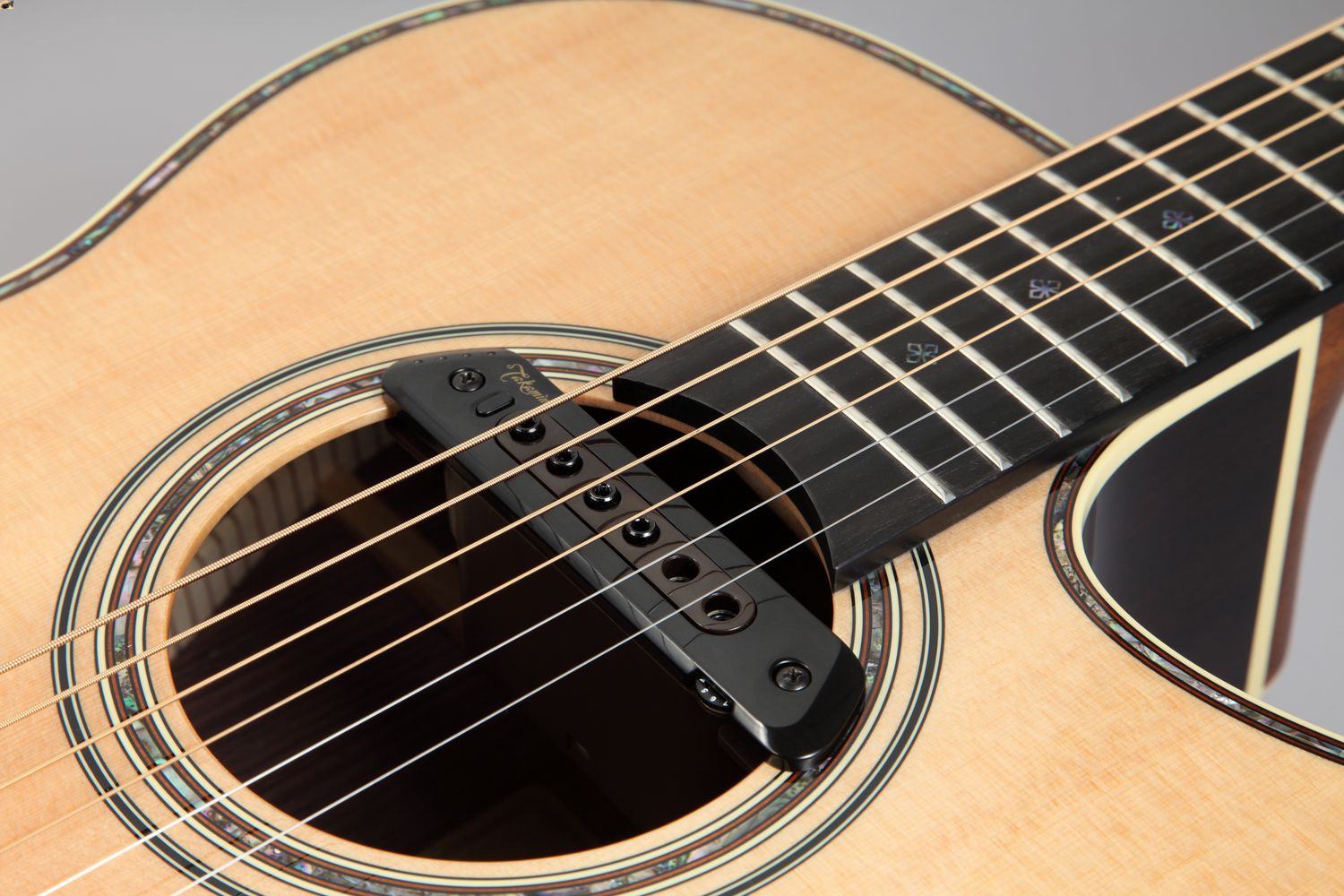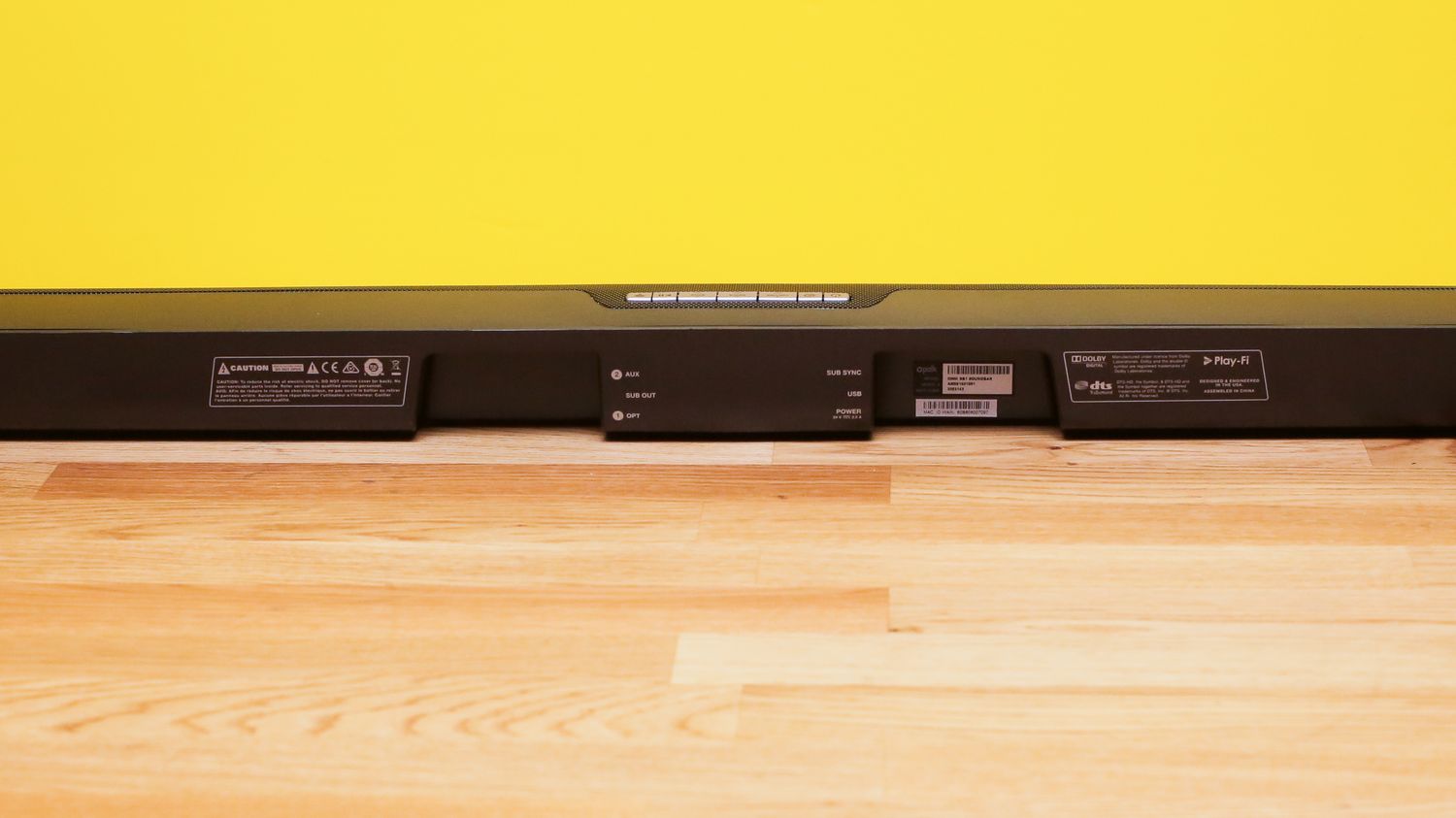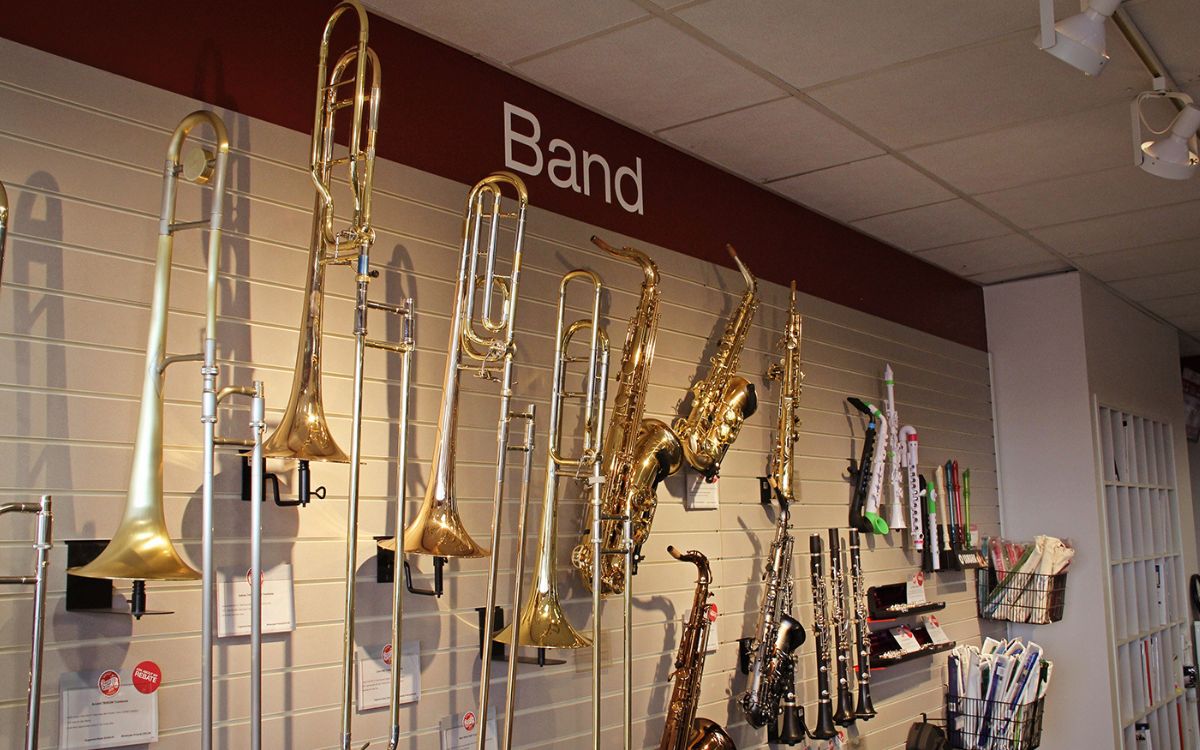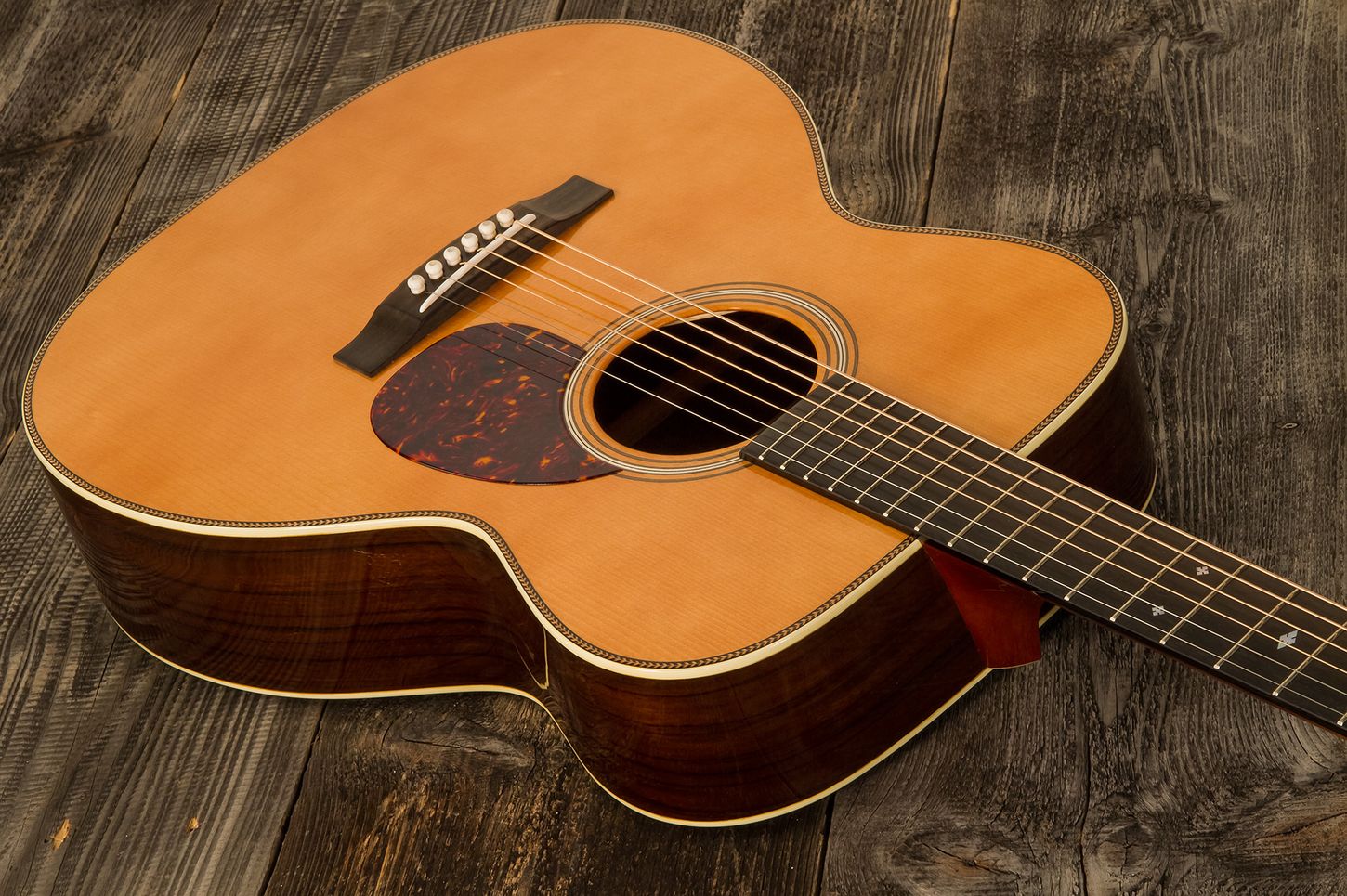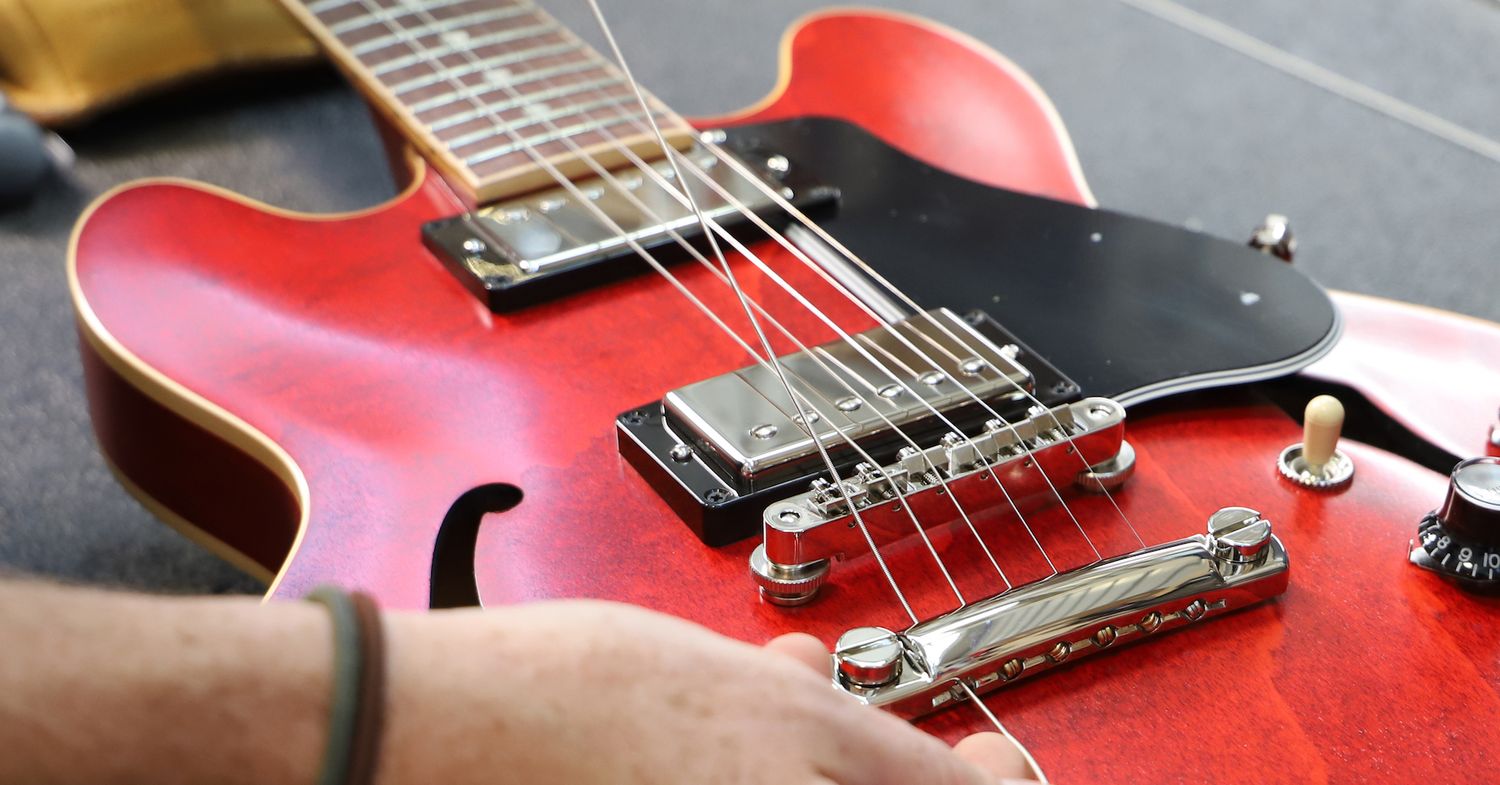Home>Production & Technology>Acoustic>Which Part Of An Acoustic Guitar Has The Most Impact On The Sound
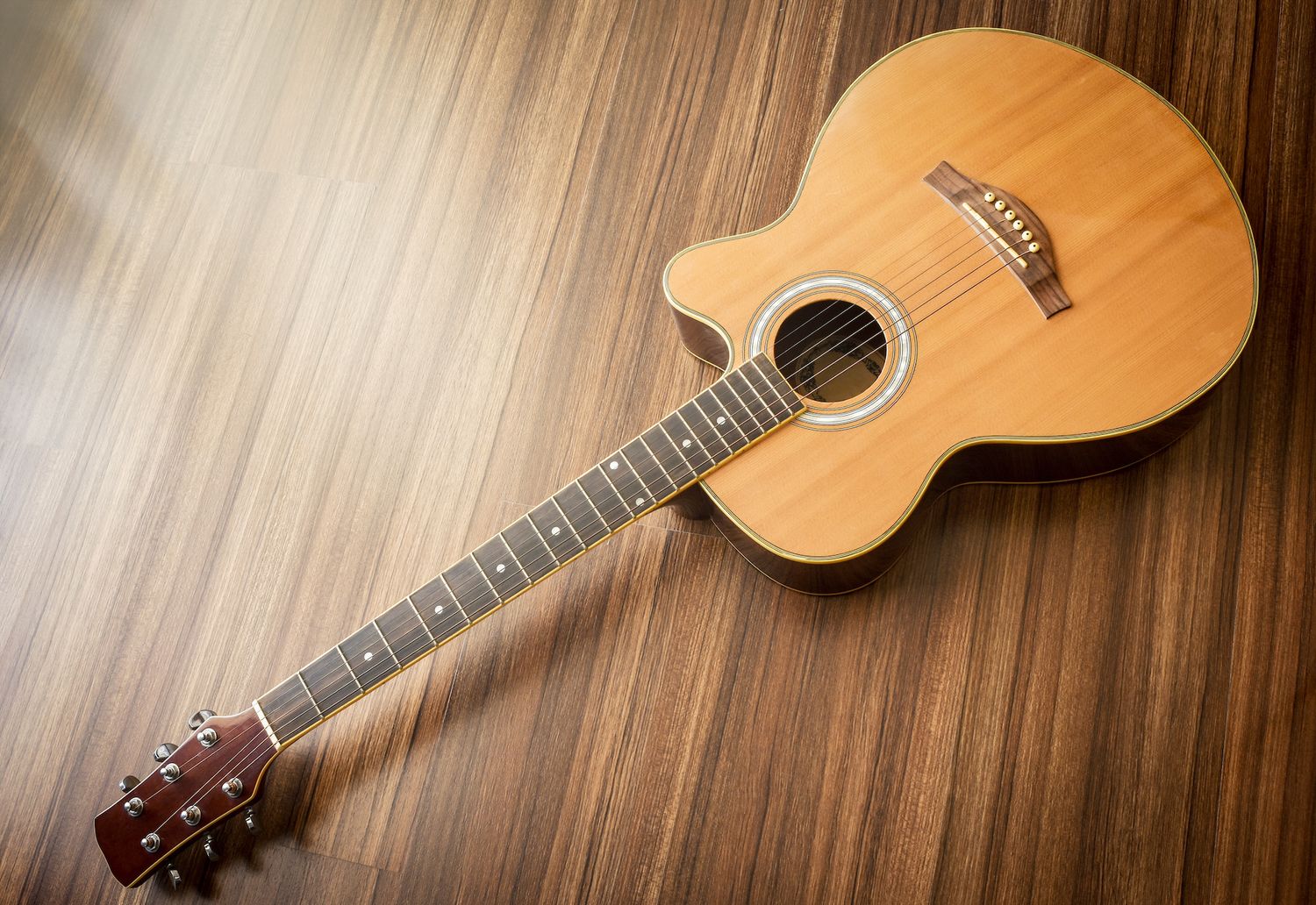

Acoustic
Which Part Of An Acoustic Guitar Has The Most Impact On The Sound
Published: March 10, 2024
Discover the key component of acoustic guitars that has the most impact on their sound. Learn how the construction and materials affect the overall tone and quality. Gain insights into optimizing your acoustic guitar for the best sound.
(Many of the links in this article redirect to a specific reviewed product. Your purchase of these products through affiliate links helps to generate commission for AudioLover.com, at no extra cost. Learn more)
Table of Contents
Introduction
When it comes to the rich, resonant tones of an acoustic guitar, there are several components that work in harmony to produce the instrument's distinctive sound. Each part of the guitar plays a crucial role in shaping the overall tonal quality, but there is one component that stands out for its significant impact on the sound: the soundboard. The soundboard, also known as the top or face of the guitar, is a vital element that influences the instrument's acoustic properties.
The soundboard is the largest and most visible part of the guitar's body, serving as the primary vibrating surface that amplifies the strings' vibrations and projects the sound. Crafted from carefully selected tonewoods such as spruce, cedar, or mahogany, the soundboard is responsible for transmitting the strings' energy into audible sound waves. Its ability to resonate and respond to the strings' vibrations is what gives an acoustic guitar its distinct timbre and character.
In this article, we will delve into the intricate anatomy of an acoustic guitar, exploring the components that contribute to its sonic identity. By understanding the role of each part, we can gain insight into why the soundboard holds such prominence in shaping the instrument's tonal characteristics. Join us as we embark on a journey through the inner workings of the acoustic guitar, uncovering the secrets behind its captivating sound and unrivaled musical allure.
The Body of the Guitar
The body of an acoustic guitar is a marvel of engineering and craftsmanship, designed to resonate and amplify the vibrations produced by the strings. It is the hollow chamber that houses the sound-producing components, including the soundboard, back, and sides. The body's shape and size greatly influence the instrument's tonal characteristics, volume, and projection.
Body Shape and Size
Acoustic guitars come in various body shapes, with the most common being dreadnought, concert, grand auditorium, and parlor. Each shape offers distinct tonal qualities, with differences in bass response, midrange prominence, and overall balance. The size of the body also plays a crucial role in determining the guitar's volume and projection. Larger bodies tend to produce more pronounced bass tones and increased volume, while smaller bodies offer a more focused and intimate sound.
Tonewood Selection
The choice of tonewoods for the body construction significantly impacts the guitar's sonic profile. Spruce, cedar, mahogany, and rosewood are among the most popular tonewoods used for the soundboard, back, and sides. Spruce is renowned for its bright and articulate sound, making it a preferred option for the soundboard. Cedar, on the other hand, produces a warmer and more mellow tone, often favored for its rich harmonics. Mahogany and rosewood contribute to the guitar's midrange and bass response, adding depth and resonance to the overall sound.
Internal Bracing
The body of an acoustic guitar is reinforced with internal bracing, which provides structural support and influences the instrument's tonal balance. Bracing patterns vary among guitar models and are meticulously designed to control the soundboard's flexibility and resonance. The bracing not only strengthens the soundboard but also shapes the way it vibrates, affecting the guitar's sustain, projection, and tonal complexity.
Soundhole and Rosette
The soundhole, located on the soundboard, serves as an acoustic port that allows the sound waves to escape from the guitar's body, contributing to the instrument's projection and resonance. Surrounding the soundhole is the rosette, an ornamental inlay that adds aesthetic appeal to the guitar while also providing structural support to the soundboard.
In essence, the body of an acoustic guitar is a meticulously crafted assembly of components, each playing a crucial role in shaping the instrument's sonic identity. From the choice of tonewoods to the intricacies of internal bracing, every detail contributes to the guitar's tonal nuances, making it a testament to the artistry and precision involved in creating a truly exceptional musical instrument.
The Soundboard
The soundboard, often referred to as the top or face of the guitar, is a pivotal element in determining the instrument's acoustic characteristics. Crafted from carefully selected tonewoods such as spruce, cedar, or mahogany, the soundboard serves as the primary vibrating surface that converts the strings' energy into audible sound waves. Its ability to resonate and respond to the strings' vibrations is what gives an acoustic guitar its distinct timbre and character.
Tonewood Selection
The choice of tonewood for the soundboard significantly influences the guitar's tonal profile. Spruce, known for its exceptional strength-to-weight ratio, is a popular choice for soundboards due to its ability to produce a broad dynamic range and crisp articulation. Sitka spruce, in particular, is favored for its versatility and balanced tonal properties, making it a common selection for acoustic guitar soundboards. On the other hand, cedar soundboards are prized for their warm, mellow tones and rich harmonics, making them well-suited for fingerstyle playing and genres that benefit from a more intimate sound.
Soundboard Thickness and Flexibility
The thickness and flexibility of the soundboard play a crucial role in shaping the guitar's overall tonal characteristics. A thinner soundboard tends to be more responsive and sensitive to the strings' vibrations, resulting in a more pronounced and dynamic sound. Conversely, a thicker soundboard can contribute to a more focused and controlled tonal output, particularly in higher volume settings. The balance between thickness and flexibility is carefully considered during the guitar's construction to achieve the desired tonal response and resonance.
Soundboard Bracing
Internal bracing, strategically positioned beneath the soundboard, reinforces its structure and influences its vibrational behavior. The bracing patterns are meticulously designed to control the soundboard's flexibility, resonance, and tonal balance. Different bracing configurations, such as X-bracing, scalloped bracing, and fan bracing, impart distinct tonal signatures to the guitar, affecting factors such as sustain, projection, and harmonic complexity. The placement and shaping of the braces are critical in achieving the optimal balance between strength and responsiveness, ultimately shaping the guitar's sonic character.
Impact on Tonal Quality
The soundboard's role in shaping the guitar's tonal quality cannot be overstated. Its ability to vibrate sympathetically with the strings and resonate in harmony with the body's acoustic chamber is fundamental to the instrument's sonic identity. The tonewood selection, thickness, flexibility, and bracing all contribute to the soundboard's capacity to produce a wide spectrum of frequencies, dynamic responsiveness, and tonal richness. As the primary transducer of the strings' energy, the soundboard is integral to the guitar's ability to convey emotion, expression, and musicality.
In essence, the soundboard stands as a testament to the intricate craftsmanship and acoustic engineering that underpin the art of acoustic guitar construction. Its influence on the instrument's tonal palette and sonic character is profound, making it a cornerstone of acoustic guitar design and a defining factor in the instrument's enduring allure.
The Bracing
The internal bracing of an acoustic guitar's soundboard is a critical component that significantly influences the instrument's tonal characteristics and structural integrity. Positioned beneath the soundboard, the bracing serves to reinforce the top, control its flexibility, and shape its vibrational behavior, ultimately contributing to the guitar's overall sonic profile.
Structural Support and Stability
The primary function of the bracing is to provide structural support to the soundboard, preventing it from collapsing under the tension exerted by the strings. By strategically distributing the load across the soundboard, the bracing ensures that it remains stable and resistant to warping or deformation, thereby preserving the guitar's structural integrity over time. This structural reinforcement is essential for maintaining the soundboard's responsiveness and tonal clarity, allowing it to withstand the rigors of string tension and environmental changes.
Influence on Flexibility and Resonance
The design and placement of the bracing have a profound impact on the soundboard's flexibility and resonance. Different bracing patterns, such as X-bracing, scalloped bracing, and fan bracing, are meticulously crafted to control the soundboard's vibrational modes and tonal balance. By strategically thinning and shaping the braces, luthiers can tailor the soundboard's responsiveness, influencing factors such as sustain, projection, and harmonic complexity. This careful manipulation of the soundboard's vibrational properties allows for the creation of distinct tonal signatures, catering to the diverse preferences of musicians and enriching the acoustic guitar's sonic palette.
Tonal Complexity and Projection
The bracing plays a pivotal role in shaping the guitar's tonal complexity and projection. By modulating the soundboard's vibrational characteristics, the bracing contributes to the instrument's ability to produce a wide spectrum of frequencies and dynamic responsiveness. This, in turn, influences the guitar's tonal richness, articulation, and overall sonic depth. Additionally, the bracing affects the guitar's projection, determining how effectively the instrument can deliver its sound to the surrounding environment. Through careful bracing design, luthiers can optimize the guitar's tonal qualities and projection, ensuring a balanced and expressive sonic output.
In essence, the bracing of an acoustic guitar's soundboard represents a harmonious marriage of structural reinforcement and tonal sculpting. Its intricate design and meticulous placement exemplify the artistry and precision involved in crafting an instrument that not only withstands the test of time but also resonates with unparalleled tonal beauty and musicality.
The Bridge and Saddle
The bridge and saddle of an acoustic guitar play a pivotal role in transmitting the strings' vibrations to the soundboard, thereby influencing the instrument's tonal characteristics and playability. Positioned on the soundboard, the bridge serves as a secure anchor for the strings, facilitating their transfer of energy to the soundboard. The saddle, a small component resting within the bridge, acts as a crucial point of contact for the strings, contributing to the guitar's intonation and resonance.
Bridge Design and Function
The design of the bridge significantly impacts the guitar's tonal response and sustain. Typically made from materials such as rosewood, ebony, or synthetic composites, the bridge must effectively transfer the strings' vibrations to the soundboard while maintaining structural stability. The bridge's placement and anchoring on the soundboard are meticulously calculated to optimize the transfer of energy, ensuring that the soundboard can resonate freely and produce a rich, balanced tone.
Saddle and Intonation
The saddle, often crafted from bone, synthetic materials, or metal, directly influences the guitar's intonation and string action. Its precise positioning and contouring are essential for achieving accurate intonation across the fretboard, ensuring that the guitar produces harmonically rich and in-tune notes at every position. The saddle's role in setting the string height, or action, also affects the instrument's playability, responsiveness, and tonal clarity, making it a critical component for both technical precision and sonic excellence.
Impact on Tonal Quality
The bridge and saddle collectively contribute to the guitar's tonal quality and projection. Their ability to efficiently transfer the strings' energy to the soundboard influences the instrument's overall resonance, sustain, and tonal complexity. A well-crafted bridge and precisely fitted saddle can enhance the guitar's dynamic responsiveness, articulation, and tonal richness, allowing for a more expressive and nuanced playing experience. Additionally, the materials used in the construction of the bridge and saddle can impart distinct tonal characteristics, further shaping the guitar's sonic identity.
In essence, the bridge and saddle stand as essential components in the intricate orchestration of an acoustic guitar's sonic potential. Their meticulous design, precise placement, and functional significance underscore their indispensable role in shaping the instrument's tonal palette and ensuring its resonance with unparalleled musicality.
Conclusion
In the realm of acoustic guitars, the intricate interplay of components culminates in the instrument's captivating sonic identity. From the resonant depths of the soundboard to the meticulous bracing, each element harmonizes to shape the guitar's tonal palette and musical allure.
The soundboard, as the primary vibrating surface, stands as the linchpin of the guitar's sonic character. Its tonewood selection, thickness, flexibility, and bracing intricacies collectively orchestrate the instrument's tonal richness, dynamic responsiveness, and harmonic complexity. The soundboard's ability to resonate with the strings' vibrations and project a wide spectrum of frequencies is fundamental to the guitar's expressive potential and emotional resonance.
Furthermore, the internal bracing, meticulously positioned beneath the soundboard, reinforces its structure and modulates its vibrational behavior. Through strategic design and shaping, the bracing influences the guitar's tonal balance, projection, and sustain, adding depth and nuance to its sonic output. This structural reinforcement not only ensures the soundboard's stability but also contributes to the instrument's enduring tonal clarity and expressive range.
Additionally, the bridge and saddle, serving as conduits for the strings' energy, play a pivotal role in transmitting the instrument's sonic nuances to the soundboard. Their precise design, material selection, and functional significance collectively contribute to the guitar's tonal quality, intonation accuracy, and playability, further enriching the instrument's sonic tapestry.
In essence, the acoustic guitar's captivating sound is a testament to the meticulous craftsmanship, acoustic engineering, and artistic vision that converge in its construction. Each component, from the soundboard to the bridge and saddle, embodies the dedication and expertise of luthiers in sculpting an instrument that resonates with unparalleled tonal beauty and musicality.
As musicians and enthusiasts alike continue to explore the sonic possibilities of acoustic guitars, the profound influence of these components on the instrument's tonal identity remains an enduring source of fascination and inspiration. It is through their harmonious synergy that the acoustic guitar transcends mere craftsmanship, emerging as a timeless vessel of emotive expression and sonic artistry.




